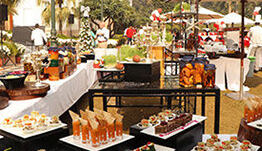Hot pot culture and table art - tips for creating an authentic experience
Understanding Hot Pot Culture: A Dive into Tradition and Community
Hot pot's roots trace back to the 13th century with Mongolian soldiers, who utilized their metal helmets to cook broth over open fires during their expeditions. This practice evolved over the centuries, embedding itself into Chinese culinary traditions. The evolution of hot pot across China has resulted in diverse regional variations, each reflecting local tastes and ingredients. From the fiery Sichuan hot pot to the mild Beijing lamb hot pot, this dish remains a symbol of Chinese cultural heritage and is celebrated worldwide for its rich flavors and communal dining experience.
In Chinese culture, hot pot is more than just a meal; it is a gathering that encourages camaraderie and strengthens bonds among family and friends. Traditionally enjoyed in large groups, hot pot dining fosters an environment of sharing and interaction, as everyone partakes in the cooking process. This communal aspect transforms mealtime into an event that transcends mere sustenance, offering a unique opportunity for connection and celebration. Families often gather around a steaming pot during festive occasions, underlining hot pot's role in enhancing familial ties and creating cherished memories.
Types of Hot Pot: Exploring Regional Variations and Flavors
Exploring the variety of hot pot styles presents a delicious journey through Chinese cuisine, each with its distinct characteristics and flavors. Sichuan hot pot is renowned for its spicy nature, often featuring a rich, fiery broth made from ingredients like Sichuan peppercorns and dried chilies. This style is celebrated worldwide for its bold flavors and is a must-try for those who enjoy spicy dishes. The combination of numbing peppercorns and other spices makes it an exhilarating culinary experience.
In contrast, Beijing hot pot is known for its simplicity and savoriness. This version traditionally uses clear broth and high-quality mutton, creating a dish that is both comforting and warming. The focus is on enhancing the natural flavors of the ingredients, making it perfect for colder weather. Diners often swish thin slices of mutton in the boiling broth, resulting in a tender, flavorful meal that invites a shared dining experience.
Cantonese hot pot, on the other hand, leans heavily into fresh seafood. This variation prioritizes the quality and freshness of the ingredients, such as fish and shellfish, reflecting regional preferences. With an emphasis on maintaining the original taste of the seafood, Cantonese hot pot highlights simplicity and purity in its flavors. This type of hot pot exemplifies how regional produce and culinary traditions shape distinct cooking styles and preferences across China.
Creating the Perfect Hot Pot Experience at Home
Creating an impeccable hot pot experience at home begins with selecting the right broth, an essential component that sets the culinary stage. Consider both flavor profiles and dietary preferences; opt for rich, spicy broths for an adventurous taste or mild ones for a comforting meal. Enhance your broth by simmering quality ingredients like garlic, ginger, and scallions to infuse deeper flavors.
Equally important are the utensils, which serve as the backbone of an enjoyable hot pot meal. Essential items include the pot for cooking the broth, a burner to maintain the ideal simmering temperature, ladles for easy serving, and personal dipping bowls for condiments. The pot is typically placed at the center of the table, encouraging communal dining, while burners should be easy to control to suit different cooking speeds. Ladles allow diners to easily serve themselves, and personal bowls ensure a customized experience with each bite being uniquely flavored by individual dipping sauces.
Together, these elements combine to create a harmonious and delightful hot pot experience right in the comfort of your home.
Hot Pot Etiquette: Enjoying the Meal Like a Local
Understanding hot pot etiquette can greatly enhance your dining experience. When sharing food in a communal setting, it's essential to rotate utensils after each use to maintain hygiene. Use one set of chopsticks for retrieving raw ingredients from the broth and another for eating. This prevents the spread of germs. When serving others, be mindful of personal space and always use communal utensils provided by the restaurant. This shows respect for both the food and your fellow diners.
Avoiding common hot pot mistakes ensures everyone enjoys the meal. One such mistake is overcooking ingredients. Items like thinly sliced meat cook quickly in simmering broth, so they should only be left in briefly. Another faux pas is hogging the communal broth by placing too many ingredients at once. This can overshadow the flavors and textures of individual items, diminishing the shared experience. By adhering to these tips and avoiding these pitfalls, you help maintain a harmonious and pleasurable dining atmosphere for everyone at the table.
Enhancing Your Hot Pot Experience with Dipping Sauces
Dipping sauces are an essential complement to a hot pot meal, providing an opportunity to enhance flavors and personalize each bite. Common ingredients include sesame oil, soy sauce, garlic, chili paste, and fresh herbs, all of which add unique layers of taste that perfectly complement the primary dish. These ingredients, when combined, can elevate the communal dining experience, making each mouthful a blend of aromatic and savory flavors. Tailoring your dipping sauce ensures that your hot pot experience is not only flavorful but also uniquely yours.
To create a personalized dipping sauce, follow a simple step-by-step guide:
1. Start with a base of sesame oil for richness and a subtle nutty flavor.
2. Add soy sauce to provide a salty, umami kick.
3. Incorporate minced garlic and chili paste to introduce spice and pungency.
4. Mix in additional ingredients like vinegar, sugar, or cilantro to balance the flavors to your liking.
Encourage creativity and adjust these elements to match your taste preferences, ensuring a delicious and well-rounded sauce that enhances, not overpowers, the hot pot ingredients.
Delicious Add-ons: What to Drink and Side Dishes to Serve
When it comes to pairing drinks with hot pot, options like beer, baijiu, and herbal tea each provide unique benefits that can enhance the dining experience. Cold beer is a popular choice as its crispness and effervescence help to offset the spicy flavors that are often present in hot pot, providing a refreshing contrast. Baijiu, a traditional Chinese sorghum liquor known for its potent floral notes, offers an authentic touch that complements the communal aspect of hot pot dining. On the other hand, herbal tea serves as a soothing, non-alcoholic alternative that aids in digestion and balances the richness of the meal. Choosing the right beverage can accentuate flavors, cleanse the palate, and contribute to the overall enjoyment of the event.
Side dishes also play a crucial role in enhancing the hot pot experience, providing additional flavors and textures that complement the main ingredients. Common side dishes include cool cucumber salad, which offers a refreshing contrast to the heated broth, and invigorating spring rolls that add a crunch to the meal. Another popular accompaniment is fermented tofu, which introduces a salty tang that pairs well with the savory broth. While these additions are enjoyed universally, variations can be found based on regional tastes and preferences, allowing for a tailored dining experience that highlights the versatility and diversity of hot pot culture. Through thoughtful drink pairings and well-chosen side dishes, diners can elevate their hot pot experience to new heights.
Conclusion: Celebrate the Joys of Hot Pot Culture
Hot pot serves as more than just a meal; it is a vibrant social experience that fosters connection and joy among diners. This communal method of dining transforms a simple meal into an engaging event where family and friends gather, cook, and share their favorite ingredients. It provides an opportunity to celebrate cultural traditions, experiment with flavors, and enjoy each other's company in a warm setting that encourages interaction and storytelling.
Encouraging readers to experience hot pot with loved ones emphasizes the lasting memories such gatherings can create. Hosting a hot pot meal presents not only the chance to enjoy diverse textures and flavors but also to build relationships and strengthen bonds through a shared culinary journey. Such experiences enrich our lives with warmth and cherished memories.
Hot News
-
Sustainability, Digital Innovation, And Personalization In Hotel Supplies
2024-02-04
-
The Dynamic Growth And Innovations In the Restaurant Supplies Industry
2024-02-04
-
Evolution And Challenges In The Self-Service Buffet Hotel Supplies Industry
2024-02-04
-
Oak Buffet Experience
2024-02-04
-
Sapele Buffet Experience
2024-02-04
-
Why Choose Chafing Dish
2024-02-04
 EN
EN
 AR
AR
 BG
BG
 HR
HR
 CS
CS
 DA
DA
 NL
NL
 FI
FI
 FR
FR
 DE
DE
 EL
EL
 HI
HI
 IT
IT
 JA
JA
 KO
KO
 NO
NO
 PL
PL
 PT
PT
 RO
RO
 RU
RU
 ES
ES
 SV
SV
 CA
CA
 TL
TL
 ID
ID
 VI
VI
 ET
ET
 HU
HU
 TH
TH
 TR
TR
 AF
AF
 MS
MS
 GA
GA
 HY
HY
 KA
KA
 HT
HT
 BN
BN
 LA
LA
 MN
MN
 NE
NE


